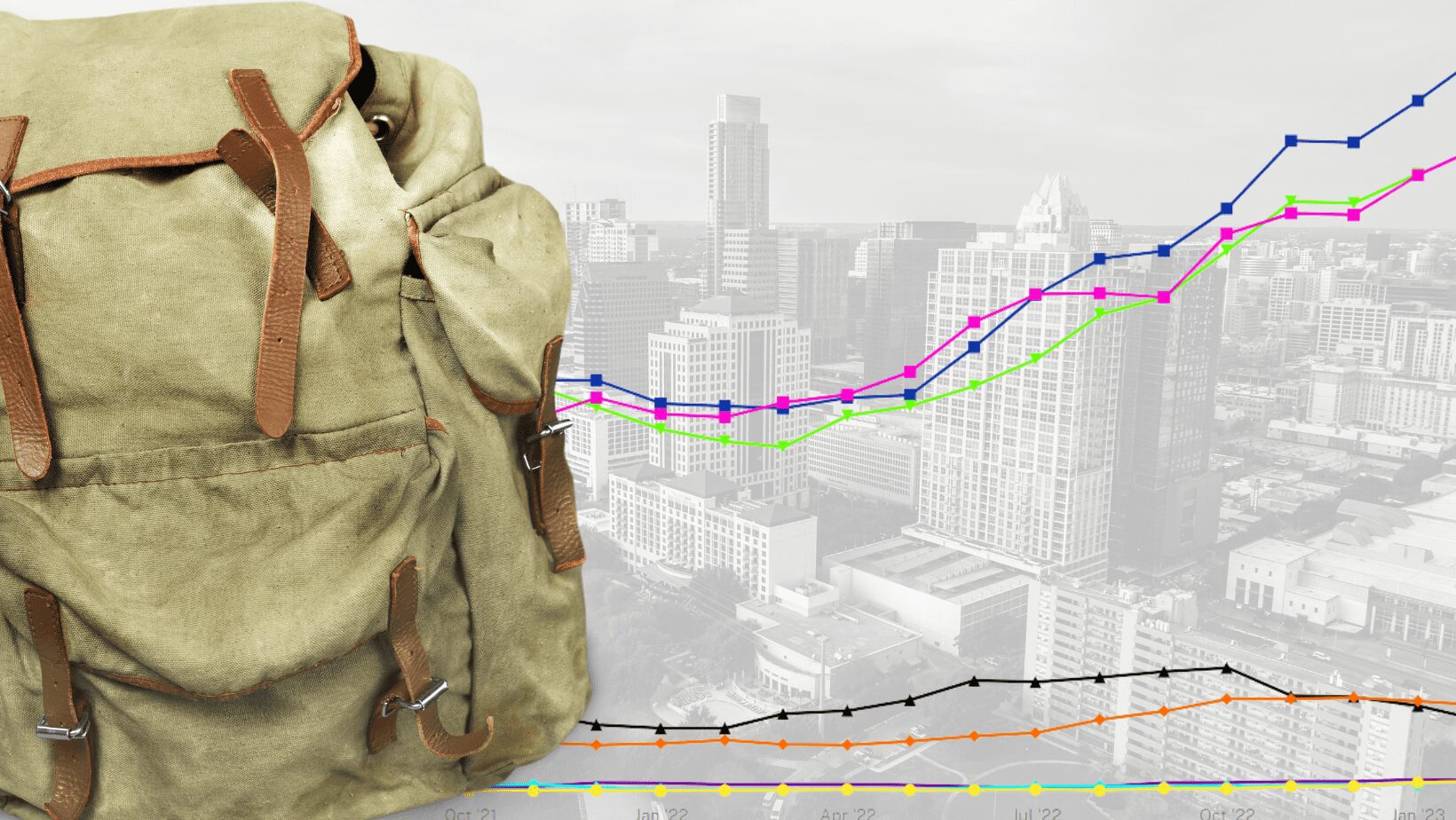How many people are unhoused in Austin? We’re getting better at estimating
AUSTIN – For years, Austinites have relied on a single number to describe the scope of homelessness. This number has punctuated news stories, informed public debates, and guided policy decisions. Yet it’s always been a flawed estimate, and now we have tools that provide a clearer picture of the need in our community.
The number – no surprise to many readers – is the Point in Time (PIT) Count. Hundreds of volunteers joined us in January this year to conduct this in-person survey of people living outside. And while there are many good reasons to conduct a PIT Count – not the least of which the personal connection it creates between volunteers and our unhoused neighbors – we can and should seek a better estimate of the scope of the need in our community.
Plenty has been written about the pitfalls of PIT data, so they won’t be rehashed in depth here. (The National Homelessness Law Center’s 2017 report, Don’t Count on It (PDF), details them.) Rather, we’re highlighting a more reliable method for understanding the breadth of homelessness in our community.
ECHO’s Research & Evaluation (R&E) Team developed this method to estimate the number of people experiencing unsheltered homelessness. It relies on data we collect and interpret daily in the Homelessness Response System. Since 2021, the R&E Team has reproduced this estimate monthly, publishing the data on our Homelessness Response System dashboard.
A detailed description of the methodology is available on our website, but here are the broad strokes: Most providers in our community contribute and share data within the Homeless Management Information System (HMIS), a person-level database used to track needs and connect people with resources to end their homelessness. Each community that receives federal homelessness grants has an HMIS, and ECHO manages our community’s system. Each month, the R&E Team analyzes the database using a certain set of parameters that indicate whether each individual in the database was likely experiencing unsheltered homelessness on a given day. This is what’s reported on our dashboard.
Like any measure of homelessness in any community, this method has its limitations, some of which are outlined in the table below. But we believe this method provides a more accurate and, importantly, more reproducible metric that helps us describe the need for housing and supportive services that exists in our community.
Differences between dashboard and PIT
| PIT | HMIS Method | |
| Main purpose | An in-person count of the number of people experiencing unsheltered homelessness | A count of the number of people in HMIS experiencing unsheltered homelessness AND seeking permanent housing services |
| Advantages | Includes people who are unsheltered but NOT necessarily seeking housing services | A more accurate snapshot of what is happening in the Homelessness Response System; detailed subpopulation and demographic data |
| Disadvantages | 1) Research suggests PIT is likely an undercount. 2) Incomplete demographic data is common. 3) | 1) Not all service providers use HMIS. 2) Dependent on number of housing assessments completed. 3) Circumstances change often for people in HMIS. |
The differences between the two measurement methods can be compared to the difference between cars you see on the road and cars that are registered with the DMV.
Imagine homelessness is like I-35. No one wants to be on I-35 – ever. But for a variety of reasons, people find themselves getting on and off the highway every day. If you take a snapshot of the interstate, it’ll tell you how many cars are on the road at that moment, their makes and models, which direction they’re headed – all valuable information, but certainly insufficient to estimate the number of drivers in Austin that day. By definition, this method misses drivers that, for one reason or another, aren’t visible on the road at that moment.
Compare this to the dashboard method, which uses data similar to DMV records of registered drivers. Combining this data with research about how often people commute in Austin, how far they tend to go, and their typical destinations provides a better estimate of the number of people who likely drove on a given day. This method misses important information, too, such as people who drove but were not registered with the DMV and people who are still registered but are no longer driving.
Neither the PIT nor the dashboard method yields a full picture, but the latter provides a better overall view of the state of driving in our community in a way that can be compared consistently day to day, month to month, and year to year.
What does the dashboard show?
The last year has seen a sharp rise in the number of people we estimate experience homelessness on a given day in our community. In February 2022, our R&E Team found at least 3,145 people were likely living outside. This February, the estimate topped 5,000 people. Our researchers find this is likely due to a combination of factors.
The first and most concerning factor is that more people are being pushed into homelessness due to the increasingly hostile rental market. The National Low Income Housing Coalition last month published the 2023 edition of their annual report, The Gap, which details the shortage of affordable and available places to live in cities across the country. Year to year, according to the report, the Austin-Round Rock region became substantially harder to afford for people making up to half the Median Family Income (MFI) – up to about $39,000 for an individual and $55,000 for a family of four in our area. For every 100 households under that limit, there are just 42 units that are affordable and available (down from 49 in 2022). There are just 16 units for every 100 households making up to 30% MFI ($23,000 for an individual), down from 22 last year. Meanwhile, the Government Accountability Office estimates every $100 increase in median rent results in a 9% increase in the rate of homelessness in a community. Fewer places to live for middle- and low-income Austinites result in more of our neighbors being pushed out of the rental market entirely.
These stressors come as housing providers are connecting more people than ever to permanent places to live. In 2021, more than 1,900 people were able to move off the street into a safe, stable living situation. And the vast majority – more than 90% – of people who move into one of these units remain stably housed two years later. Each of these move-ins is a potentially life-saving intervention. Through partnerships developed as part of Finding Home ATX, hundreds of new units of housing are in the pipeline over the next several years, with hundreds more to come. Yet the simple fact is the economic factors that push people into homelessness continue to outpace our ability to bring new units into our system.
As the City of Austin’s Homeless Strategy Officer Dianna Grey explained during a recent Downtown Commission meeting, however, we don’t believe the entire increase shown on the dashboard is due to ballooning need. Our community’s outreach capabilities have grown substantially. There are more people trained to complete housing assessments at more agencies around our community, and they’re able to spend more time completing assessments due in part to initiatives like the Austin Street Outreach Collaborative (ASOC). This increase in assessments is helping close the gap between known and unknown homelessness. It also means we’re starting to reach people sooner once they experience a housing crisis: Data shows the time it takes between the first day someone experiences homelessness and the day they complete their first housing assessment is shrinking.
Using data to drive decisions
Our community is getting better at understanding the scope of the need for housing and supportive services. The better our understanding, the more able we are to meet the need in our community with solutions at the right scale. Together, we can create a future in which everyone who loses their housing is able to move quickly back into a permanent place to live and remain there long-term. That starts with using the best possible data.


